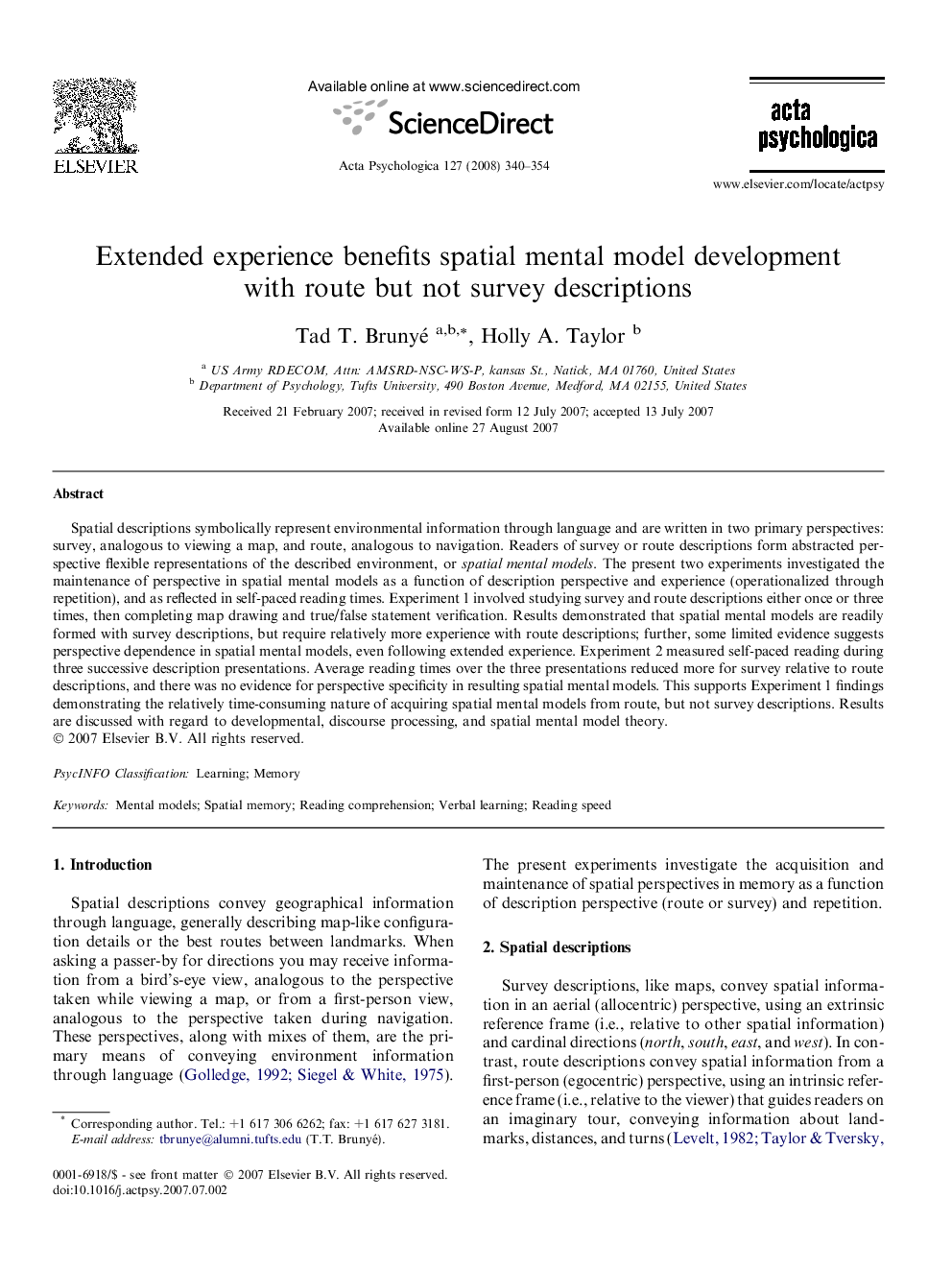| Article ID | Journal | Published Year | Pages | File Type |
|---|---|---|---|---|
| 920501 | Acta Psychologica | 2008 | 15 Pages |
Spatial descriptions symbolically represent environmental information through language and are written in two primary perspectives: survey, analogous to viewing a map, and route, analogous to navigation. Readers of survey or route descriptions form abstracted perspective flexible representations of the described environment, or spatial mental models. The present two experiments investigated the maintenance of perspective in spatial mental models as a function of description perspective and experience (operationalized through repetition), and as reflected in self-paced reading times. Experiment 1 involved studying survey and route descriptions either once or three times, then completing map drawing and true/false statement verification. Results demonstrated that spatial mental models are readily formed with survey descriptions, but require relatively more experience with route descriptions; further, some limited evidence suggests perspective dependence in spatial mental models, even following extended experience. Experiment 2 measured self-paced reading during three successive description presentations. Average reading times over the three presentations reduced more for survey relative to route descriptions, and there was no evidence for perspective specificity in resulting spatial mental models. This supports Experiment 1 findings demonstrating the relatively time-consuming nature of acquiring spatial mental models from route, but not survey descriptions. Results are discussed with regard to developmental, discourse processing, and spatial mental model theory.
